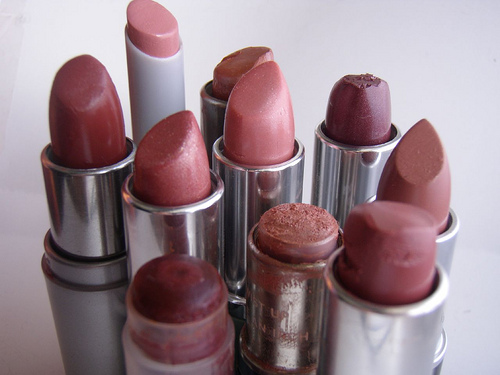Send your question to Umbra!
Q. Hi Umbra,
I just read an article about the quantity of lead in lipsticks. The obvious question is: Why? We took the lead out of gas and paint, and put it in lipstick. I love my lipstick, but I’m starting to wonder if I should.
Maura D.
Turin, Italy
A. Dearest Maura,
Getting all gussied up for the Ask Umbra 10th Anniversary Fiesta next week? You are too sweet, and I can’t wait to exchange virtual air kisses with you. (A special note to my dearest readers in the San Francisco area: Grist is throwing a for-real celebration in your fair city on April 26 — hope you’ll meet me there!)
Bellissima, your question is fair. Why, indeed, is a pollutant that can cause damage to our brains, nerves, and reproductive systems lurking in a product that is supposed to make people feel pretty? The bare-bones answer is this: Lead is everywhere. It’s in our air, our soil, our water. And as it happens, it’s in the mineral colorants often used in lipstick. Lead is a naturally occurring metal, but much of this ubiquity has to do with, as you note, our earlier predilection for adding it to things like gas, paint, pipes, food cans, and so forth. As a society, we leaded ourselves. Now we can’t get rid of the stuff.
Maura, this lipstick issue is just the tip of a bigger truth: The cosmetics industry is full of ugly secrets. Having said that, however, I don’t think evil cosmetics executives are gleefully rubbing their hands together as they pour molten lead into tiny tubes.
Of course, most of them aren’t taking great pains to avoid lead in their products, either. That’s why, when the Food and Drug Administration released an analysis of 400 lipsticks last year, each and every one contained lead (see the entire list of tested brands), ranging from 0.026 parts per million to 7.19 ppm. The agency considers these levels “very low” and says they do not pose a safety concern. The U.S. has no upper limit for lead in cosmetics, but in Canada it’s 10 ppm, and Germany once set it at 20 ppm. (Your country also seems to have strong cosmetics regulations in place, but I’m hampered from learning more by my failure to speak Italian.) So you can see that, while yucky to contemplate, the lead measured by the FDA falls below levels set by countries with generally reasonable approaches to public health.
I am being sanguine, but here is where we get to the really tasty stuff. One of the reasons the FDA remains unruffled is because they say lipstick is topical, not meant for ingestion. Which is why they have strict limits for lead in candy (yes, seriously), but not cosmetics. But others, including our friends at the Campaign for Safe Cosmetics who have led the charge on this topic, point out lipstick does get ingested — and, more to the point, say there is no safe level of lead exposure.
So should you kiss your favorite gloss goodbye? If I were you, I’d do a few things first:
- Check the FDA list to see if your brand is on it, and to get a sense of which brands are the worst offenders (cough, L’Oréal, cough). If you want even more info, make a visit to the Skin Deep database.
- Look for lead-free alternatives. This might require some poking around, but with the recent news frenzy, those companies selling safer lipsticks are eager to boast about it. (Keep in mind that organic and natural products aren’t necessarily lead-free.)
- To be on the safe side, do kick your lipstick to the curb if you’re pregnant, and don’t let kids play with it if you keep it around; pregnant women and children are especially vulnerable to lead.
To be perfectly honest, lipstick might not be the biggest threat in the world — but if it gets men and women thinking about the health risks posed by many of the products we use each day to smell, look, and feel nice, that’s worth a bit of hoopla.
Puckerly,
Umbra




